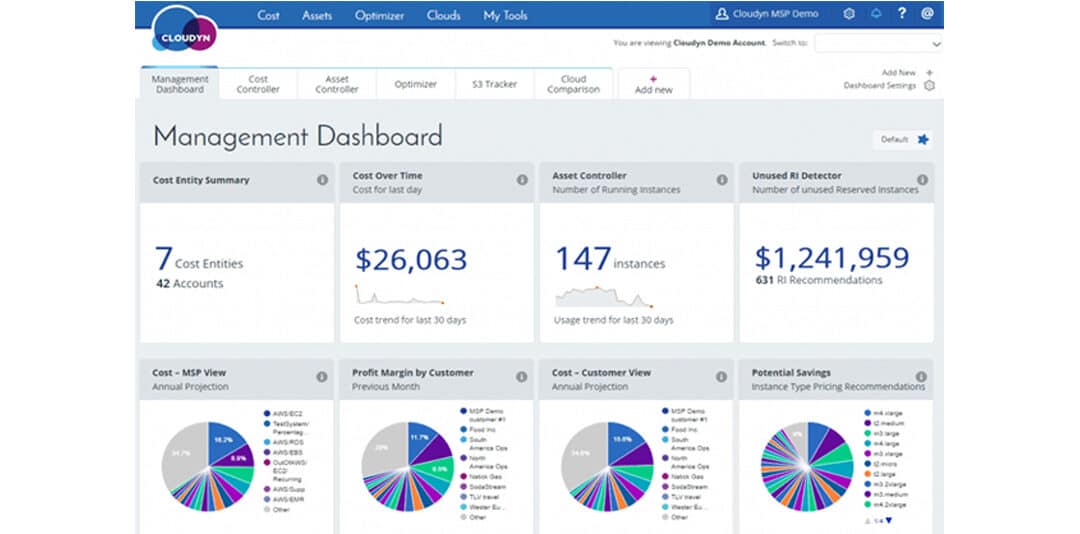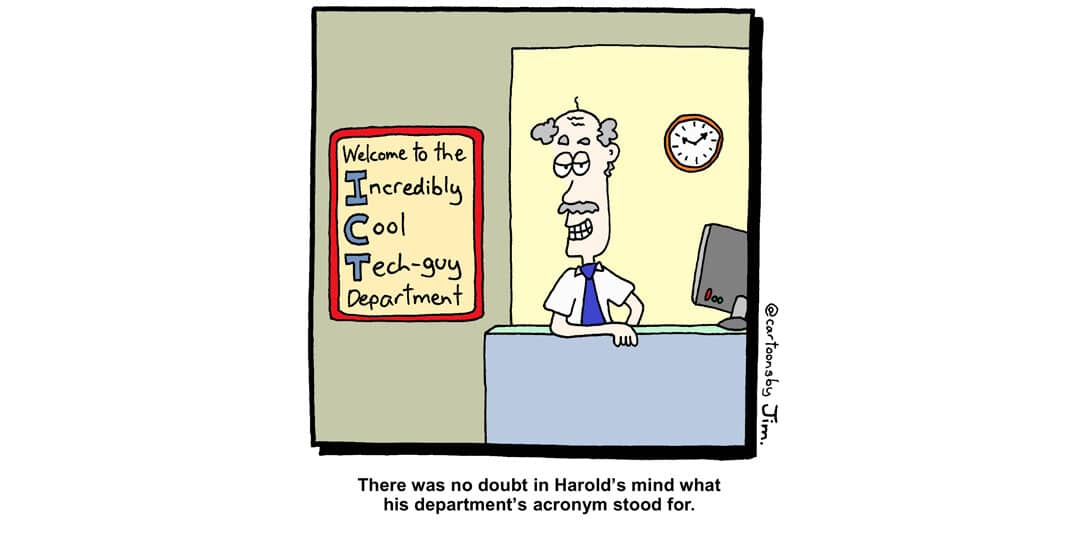
by DavidSpratt | Mar 2, 2018 | Energy
True story. An employee took the flash new company Electric Vehicle (EV) up North on a sales trip. On the way home, they realised that the battery charge was running out so stopped in a small town to find a charging point. There was, inevitably, no charging station for electric vehicles so they rang the tow company and got a ride home alongside a towie with bad breath and even worse body odour. Back at work, the boss pointed out the switch that turned the hybrid vehicle back to petrol power.
My point? Electric Vehicles (EV’s) are still a bit of a mystery both to their users and to the people making the financial decisions.
Add to this the element of uncertainty of buying a car from a man who straps his second-hand sports cars to a space rocket and whose loss-making company can’t actually deliver a simple sedan on time and you must have to have reservations around updating your fleet from petrol to electric.
Despite the uncertainty let’s examine the business case for electric vehicles.
Business Case for Electric Vehicles
At a recent presentation to energy sector leaders, Gary Holden, CEO at Pulse Energy and a well-known thought leader and innovator, proposed that it costs, all up, around $10 to travel 100kms in a car and that it has pretty much always done so.
Simply put, it cost the same for a Model T in 1920 to travel 100km as it did for a Honda Accord to travel the same distance in 1990. The reason? Internal combustion engines are, and always have been, between 25% and 30% efficient. Any gains achieved through advances in technology are quickly swallowed up by faster travel – or slower if you are travelling on that great carpark known as the Auckland motorway network.
Along come electric vehicles and a very simple idea. Capture the energy of braking and stuffing it into a battery and 30% efficiency suddenly rises to 80%, 3 times more efficient than a petrol engine.
Cheap Electricity Provides Strategic Advantage
Now add the New Zealand strategic advantage, cheap renewable hydropower, and the comparative cost of electricity to that of a barrel of oil, roughly US$40 on average for the last forty-five years, is now almost exactly half that at $20. “In other words,” says Gary “for oil to compete with electric it would have to permanently return to pre- 1973 prices.”
Is it any wonder we are seeing major oil producers falling over themselves to drop the price of oil and investing in massively polluting extraction of shale oil and fracking in order to slow down the inevitable march of electric vehicles into the market?
Barriers to Adoption of Electric Vehicles Disappearing
So, what is stopping New Zealand’s companies from rapidly switching to electric vehicles, say by 2020? Not a heck of a lot according to Gary.
He believes, and I agree, that by 2020 the premium we pay for electric cars will be a thing of the past. The high running cost, inefficiency and plain nasty polluting qualities of petrol vehicles will mean that electric vehicle leaseholders will see higher residual prices being offered at the end of their three-year term (2023) Combine that with the electric vehicles superior efficiency, low operating cost and ever-increasing range and companies should be looking very, very hard at their vehicle choices.
There is, however, more to this equation than a simple cost per kilometre and residual value. Our electricity market is complex, riven with contradictions and slow to respond to demand drivers like electric vehicles. Next month I will have a close look at the forces in the New Zealand market that will either hasten or slow electric vehicle uptake.
This article is part 1 of a series in which I will explore the EV future over the coming months. Part 2 discusses buying electric vehicles.
Read more electric car analysis in the New Zealand/Australia context, or take a look at these electric car reviews.

by DavidSpratt | Feb 7, 2018 | ICT
Last week the IT industry was shocked to find that the Intel chipsets that drive many of our phones, smartphones, laptops, desktops and our servers, have an architectural flaw that exposes them to hacking. The other two major chipset manufacturers AMD and ARM appear to be much less affected.

By patching their operating systems to address this design flaw in the Intel chipset the OS providers have been forced to sacrifice the thing that impacts us most, performance. The numbers aren’t out yet but we could be seeing reductions in performance of between 5% and 30%.
For the average user, even a 30% reduction in performance on their laptop or smartphone might not have any discernible impact. Most of us don’t use even a fraction of the capability of our machines and with the consumption of cloud software services such as Office 365 the compute power is in the cloud anyway. But herein lies the problem…
Cloud Service Providers (CSP’s) like Microsoft, Google and Amazon are massive consumers of high-intensity computing power. Every day they wrestle with optimising the cost and performance of their infrastructure environments to deliver to their own and their customers’ needs.
CSP’s have been the first to implement the security patches on their servers, as you would expect from responsible global providers. This is where a 30% performance reduction really hurts. My guess is that their systems architects have been in a right state of panic about how to address the possibility of significant performance degradation unless loads of new equipment is installed in a hurry.
What does this mean to you, the business user of cloud services?
The future performance, and thus the relative cost, of chipsets, will also likely change for the worse in the short to medium term. The security flaw I mentioned earlier was based on the need for manufacturers to make chipsets run faster. This design is now no longer acceptable from a security perspective and will have to change somehow. It will take time for them to come up with a new solution. In the meantime, all those performance/price gains we have come to expect in the past will be very hard won indeed. Expect increases in prices for Intel-based computers and some smartphones.
Expect to see cloud services prices rise as CSP’s move to recover their increased infrastructure overheads both current and into the future
There is little we can do in New Zealand to force a better deal from the big multinationals. Local providers like Datacom and Revera are subject to price/performance challenges as much as the next company and are unlikely to welcome requests for better pricing.
What you can do, though, is to manage cloud computing costs by addressing the issue of consumption through closely monitoring when and how you use cloud computing infrastructure. Microsoft and Amazon both now provide options for paying a lower price for guaranteed future consumption. There is also the option available to purchase services on the spot market. Discounts in this market can be as high as 90% but you must know what you are doing because spot markets go up and down based on demand.
Monitoring and then actively managing cloud consumption requires experience and skill. Rather than trying to do it yourself, you should consider using the services of a utility analytics firm. This will help inform the decisions you make, directly tie cloud computing cost savings to the activity and will allow you to focus on the business at hand rather than on what can be a rapidly changing and complex computing marketplace. Total Utilities has the tools and expertise to deliver real insights and recommendations to help optimise your cloud consumption and cost. For more info click here or contact us today.

by DavidSpratt | Dec 18, 2017 | ICT
Last year I compiled a satirical list of ICT companies that won or lost the battle for the affection of us ICT brokers for businesses. The response was a mixture of simpering sweetness and hate mail (you know who you are).
Nevertheless, I’m doing it again this year, in this article.
To my colleagues who I offend in the next few hundred words, I apologise for my ill humour, even if you have been the authors of your own destruction.
ICT Winners and Losers (a satire)
The Coolest Kids in Town Award: Kordia
Who would have thought that Kordia — formerly government-owned BCL with its unwashed hoard of nerds in walk shorts, sandals, long socks and straggly beards — would have transformed itself over a single decade into the ultra-cool company it is now?
Delivering superb, Ultra-Fast Broadband innovation at impressive price/performance levels and showing market leadership in emerging technologies such as the Internet of Things-enabler Sigfox, it seems maybe geeks can fly after all.
The How Many Fingers am I Holding Up? Award: 2 Degrees
It seems only a year or two ago that 2Degrees offered great coverage to the major cities and a big finger to the provinces.
Millions of dollars and a heck of a lot of hard work later, they now offer something resembling decent coverage at a very competitive price. A player to watch in 2018.
The Spurned Lover Award: Spark Marketing
Please, please, please Spark will you stop telling us how crap you were and how things will get better now that you have sacked half your staff. When all you have left are excuses for your bad behaviour and pleas for forgiveness, maybe it’s time to make a break with the past and move on.
In truth you are damn good at the things that matter and most of us love buying off Kiwi companies (see Kordia and Datacom).
The People’s Choice Award: Datacom
For those of you who have nothing but bad things to say about these guys I have two questions: “Where do the vast majority of the most respected and admired ex- Gen-i and Computerland people work now?” and, “Which other Kiwi success story has grown at over 11 per cent year-on-year for over a decade, while competing head to head against some of the world’s smartest and most successful multi-nationals?”
Datacom has proved, to the tune of $1.2 billion a year in revenues, that people buy off people, even if most of them have grey hair poking out their noses and ears.
The Comeback Kid Award: Samsung Galaxy S8
The best thing since the Nokia flip phone. Great camera, features and battery life. Pity people still think twice before putting it in their pocket.
The Lone Ranger Award: People still investing in DIY IT infrastructure
The No 8 wire mentality that you were so proud of in the 90s is now just a sign of your desire to control everything at the expense of business flexibility.
We know you want to prove that you are more intelligent than everyone else, but have you noticed that the guy who pays your wages and conducts your annual salary review has stopped putting you in front of the business and has informally renamed your section “The Department of No”?
That roaring sound is the jet engine that is public cloud departing with your career prospects.
The Hottie of the Year Award: Samsung Note 7
I was so proud when I took you out of the box and stroked your luscious lines. The screen definition, the camera, the selection of cool software: you made me truly happy for a while.
Then there was the smoke, the heat, the burning sensation in my pocket…has anyone seen the fire extinguisher? Oh, the humanity!
Merry Christmas readers. Talk in the New Year.
David Spratt is a director of Total Utilities. Email [email protected]

by DavidSpratt | Nov 3, 2017 | ICT
This is the third and final article on Communities of Practice (COPs), a model designed to help align business strategy with the evolving knowledge and experience of your people, while still taking advantage of the efficiencies that can be gained through more formal organisational structures and processes.
I can now safely say, after many years of practice — complete with a few painful cock-ups along the way — that the workplace model, Communities of Practice (COPs), does work. Making Communities of Practice work doesn’t happen on its own, but with the right groundwork in place and organizational support they can flourish.
COPs are made up of three essential elements: a domain (common ground or project), community (the particular group of people working on the domain), and practice (the community’s actions taken to develop and share knowledge in carrying out the job together).
There are six key components to making Communities of Practice work in the real world
1. Select the Practices that will underpin business strategy and unite your people
This process isn’t dictated by one manager. We pulled together a team of respected leaders and experts in the business and charged them with finding an initial group of three areas for “practice development”. That team determined that the business’ management of records and documents, information security, and messaging, were critical technologies with skills, activities and innovation at a premium.
Getting people to agree on exactly what “messaging” meant, for example, was difficult.
Expect the first few COP sessions to be talk fests where people debate in minute detail exactly how the particular Practice is defined, what members should be doing , how they will do it and what outputs they expect.
2. Identify the right people to participate
We asked for volunteers. Trying to name people and then advise them “congratulations we have found another way to suck the joy out of you” just doesn’t fly. We recognise many dedicated staff already work longer hours than is good for them.
3. Make time and resources available
Asking your busiest expert to take on a COP lead role without providing support and resources will see him or her head out the door faster than you can say “Mummy has moved in with Uncle Bob”.
Over time the Practice will introduce efficiencies and improvements that make work more enjoyable and effective, but it won’t happen overnight and you need to plan for that in terms of resources and people’s time.
4. Find easy-to-use technology to ensure ongoing engagement
When we first started COPs we thought a couple of face-to-face meetings a year and a monthly video or voice conference would be enough to drive results. How wrong we were! After a short time, the demands of day-to-day work took over, excitement waned and we struggled to keep people engaged.
The arrival of instant messaging tools such as SharePoint, Skype, Google docs, hangouts, classrooms and chat forums have changed everything. Communities of Practice can now be made a practical reality for an extremely low cost and with astonishing speed and availability.
5. Set realistic goals and objectives for each Practice
At first, we tried to set grand goals for Practices. As expected, everyone became confused, frustrated and rapidly lost interest. So, we changed tack and asked, “What is the biggest single problem we face and how could we solve it?” By narrowing down the discussion to a short, sharp challenge, people became more engaged.
As important as engagement is to making Communities of Practice work, it was an unexpected consequence. It turned out that many people had actually solved this specific problem in the past, either in their region or at another job. Often, they had spent hours at home building a powerful and viable answer to the problem. It was just that no one knew about it!
The Practice provided these people with a forum for sharing their solutions with colleagues who were genuinely interested and could offer further improvements.
6. Appoint executive sponsors who are accountable for results
In saying this, I don’t mean some poor middle manager who has just been assigned to COPs “special projects” while you prepare to clean out his office. Accountability for COPs is an executive role for two reasons: they will make sure it succeeds; and the people involved will actually believe it will succeed.
Confidence is essential when starting any new initiative, and Communities of Practice are no exception.
This is part three of a series. If you missed it, catch up on parts one and two here: Forming Communities of Practice and three essential elements for successful Communities of Practice.

by DavidSpratt | Oct 31, 2017 | Case Studies, ICT
 In 2013, Zespri, one of the world’s leading horticultural companies, and the recognised category leader in kiwifruit, was facing many significant challenges. The Psa virus which attacked their main gold kiwifruit crop, had the potential to devastate the company and its grower shareholders. In addition, they were facing significant capital outlays associated with their existing ICT systems and the need to upgrade their computer hardware.
In 2013, Zespri, one of the world’s leading horticultural companies, and the recognised category leader in kiwifruit, was facing many significant challenges. The Psa virus which attacked their main gold kiwifruit crop, had the potential to devastate the company and its grower shareholders. In addition, they were facing significant capital outlays associated with their existing ICT systems and the need to upgrade their computer hardware.
Zespri had to ask questions like, “Could the new variety of crop, Sun Gold, be more robust and become another bestseller?”, or, “Would our outputs dramatically reduce?” At the same time, Zespri’s Board were concerned about identifying and mitigating the risks of a natural disaster like the tsunami in Japan or the earthquakes in Christchurch. Their data centres were located in Mount Maunganui and backup services in Tauranga. They wanted to understand the impact these types of events could have on their onsite server and storage infrastructure.
Measured Baseline Informs Strategy
Undertaking the initial analysis of Zespri’s current position, we established a baseline ICT cost. This baseline was used as a benchmark to inform financial decision-making and monitor ongoing expenditure.
With assistance from the team at Total Utilities, Zespri evaluated its ICT data centres and infrastructure services and platforms. The objective was to determine whether they could manage the range of potential outcomes that they faced. These systems would have to be flexible enough to adapt to both the best case and the worst-case scenarios.
Zespri sought Total Utilities’ independent advice to identify and assess out how they could best respond to these risks and opportunities. They ultimately saw the need to inform vital decisions around how they consumed computer services with a scalable and cost-effective model that was aligned with their overall financial and business strategy.
Undertaking the initial analysis of Zespri’s current position, we established a baseline ICT cost. This baseline was used as a benchmark to inform financial decision-making and monitor ongoing expenditure. Using this measure, we demonstrated to the CIO and CFO and subsequently their executive and board, significant savings could be made by moving to a monthly subscription model based on public cloud services.
In the future increases above the baseline, increased spending in ICT, would be indicative of Zespri’s growth. The baseline is a very useful comparative tool, both for supporting financial decisions and controlling monthly spend.
After conducting a thorough analysis of the needs and opportunities available to Zespri, we provided the quantitative data that underpinned the business case presented to their board. Total Utilities subsequently supported Zespri through our independent Request for Proposal process to choose a candidate for the migration to, supply and support of a comprehensive cloud-based infrastructure running over the Microsoft Azure Platform.
Moving ICT operations to Microsoft’s Azure cloud computing platform has many advantages including access to data from anywhere and at any time, an IT environment that is quick and easy to replicate as new offices open and new services become available, and it can effectively respond to the increased competitiveness that occurs when other global players enter the market.
In addition, moving to Azure mitigated the risk of natural disasters crippling the closely located physical data centres.
Ongoing Insights and Cloud Analytics
Our commitment to providing Zespri with a dynamic and meaningful experience meant that our relationship continued past the selection phase. With our expertise in financial analytics we continue to provide them with forever evolving insights. Steve Wichman, Zespri’s Procurement and Commercial Manager, outlines how Zespri is moving into an ICT maturity phase. With this the board is always looking for ways to optimise their systems. The regular technical and financial input from Total Utilities is very useful in this regard, Steve describes us as a sounding board and an independent voice.
Zespri utilise the Total Utilities cloud management service based on our analytics, reporting capability and the Cloudyn tool. Providing these reports and monthly insights we can help ensure that expenditure is aligned, appropriate, and adaptable to Zespri’s financial strategy. We also help them manage and mitigate the risks associated with an OPEX approach, bill shock, by providing them with real-time alerts of consumption. Steve states that these reports provide insights on how Zespri can best optimise their systems, analyse exceptions, and determine how they can improve their current and future operating state while reducing overall expenditure.
Customer-Centric and Flexible Reporting
The board is always looking for ways to optimise their systems. The regular technical and financial input from Total Utilities is very useful in this regard.
The dynamic nature of our service to Zespri means that, as well as providing clear and understandable reports, our analytics extend to creating what-if scenarios. For example, we can analyse what might happen if Zespri consolidated or expanded some of its ICT services. This approach means we can project future cost savings or increases accurately.
Total Utilities insights, financial analysis and recommendations have become more meaningful as more data is gathered and more avenues explored. We can now calculate ICT costs on a “per service” basis. This allows Zespri to identify the true cost of financial, operations, marketing or any other system that requires ICT resources. Our benchmarking and cash projection approach extends to three-yearly reviews of the business case. These reviews are vital to ensure that the case remains relevant to Zespri’s situation and consistent with the parameters set by the board. Regular reviews, along with ongoing monthly, quarterly and annual reporting, are at the heart of Zespri’s ongoing drive to extract the maximum, identified and projected value available from the Microsoft Azure platform of services.
Understanding Key Business Drivers to Leverage Competitiveness
Other ICT consulting companies might focus on the technology or hardware, we take a financial analytics approach that sees ICT as a consumable and adjustable utility. This means consumption and costs are transparent, flexible and optimised. We believe ICT should be financially appropriate for a company, aligned with their goals, and be able to adapt to real-world factors. We do all this by establishing a baseline of costs, creating a detailed business value analysis in support of a business case and then deliver regular monitoring. This approach informs understanding of the company’s consumption, costs and benefit realisation from their Azure based ICT systems. This is the multi-faceted and valuable service that we continue to provide to Zespri.
Finally, would Steve at Zespri recommend us to other companies? A resounding yes. Our strong and dependable relationship, the way we deliver on a job both in quality and in timeliness, and our independent and trusted advice, is hard to find elsewhere.







